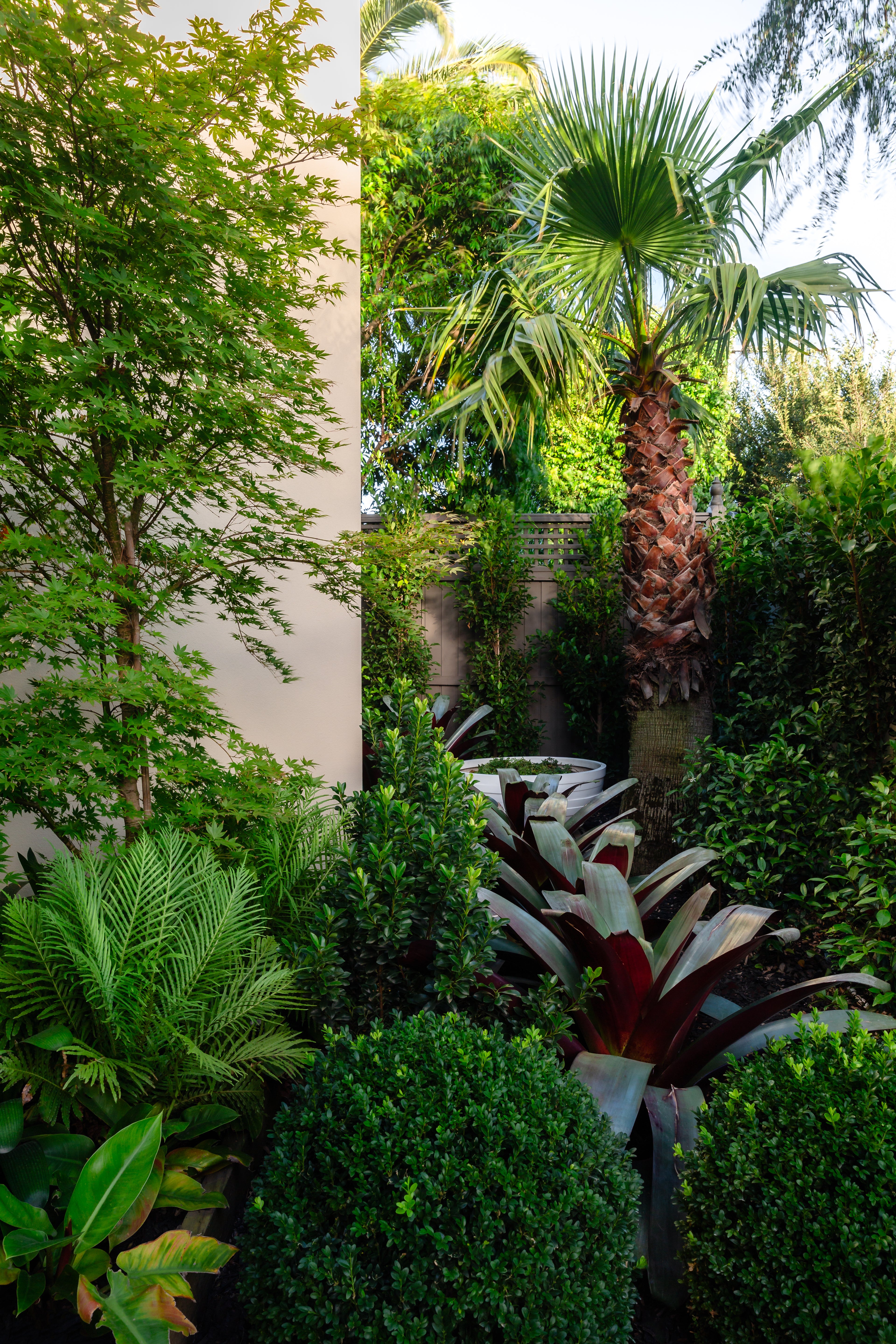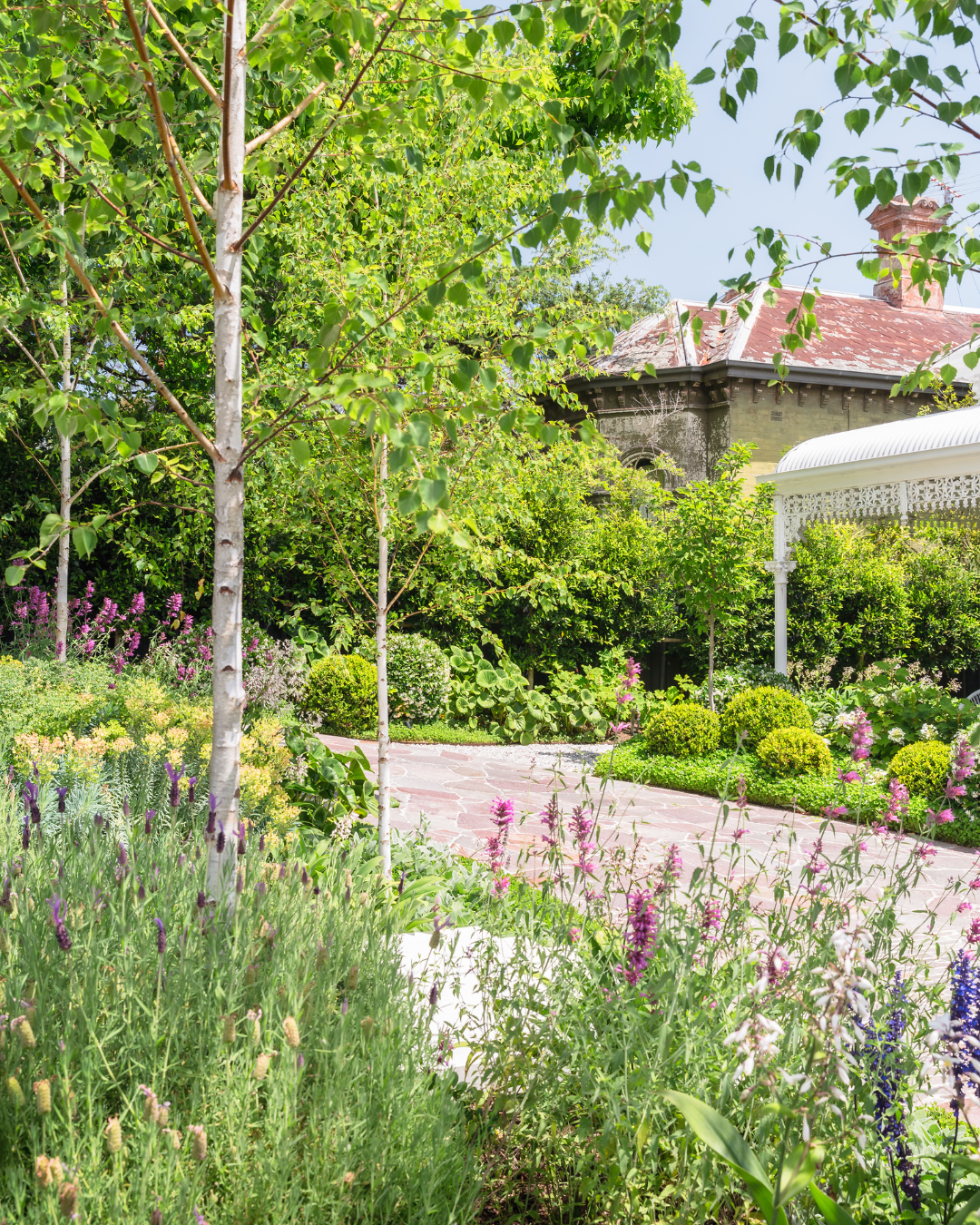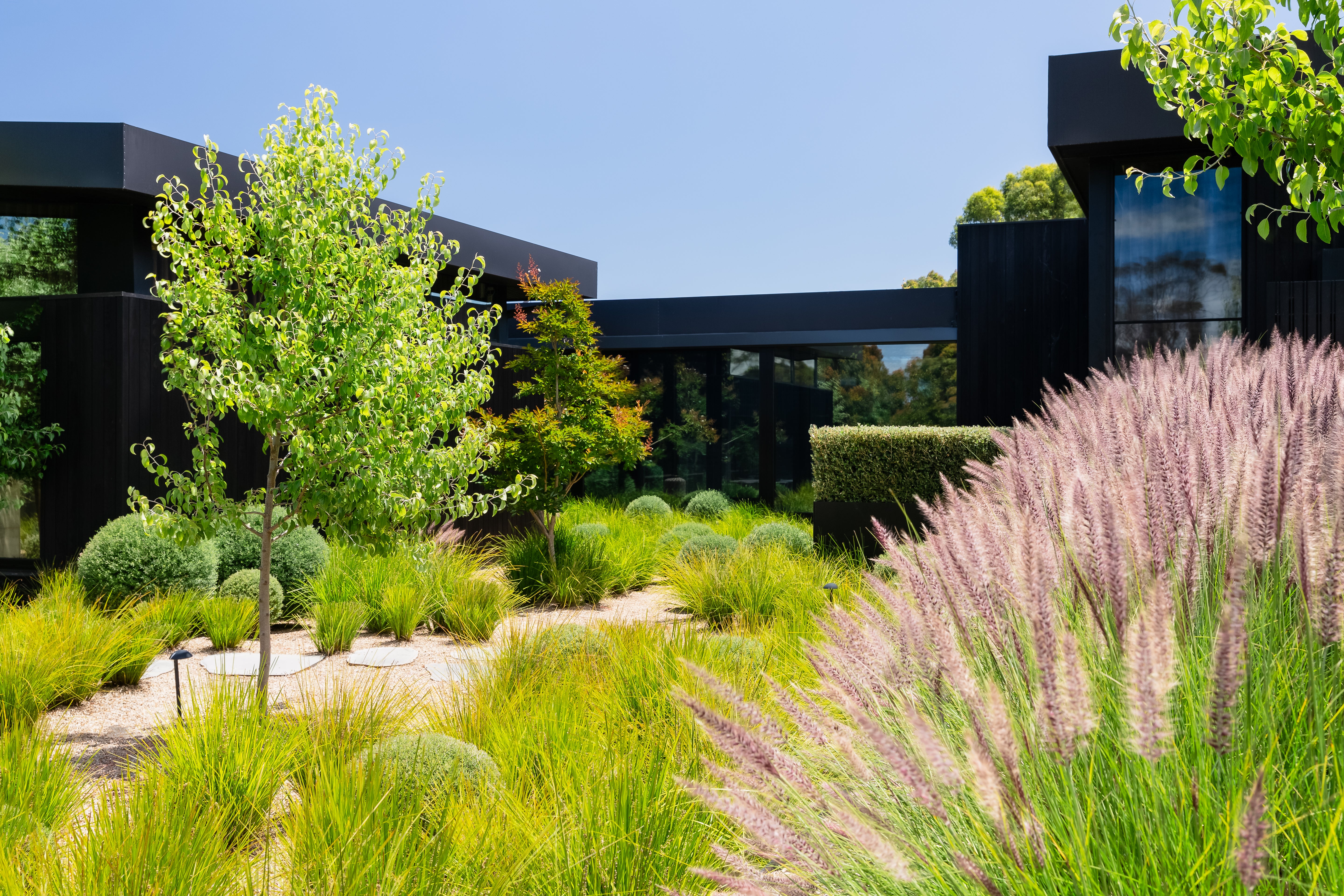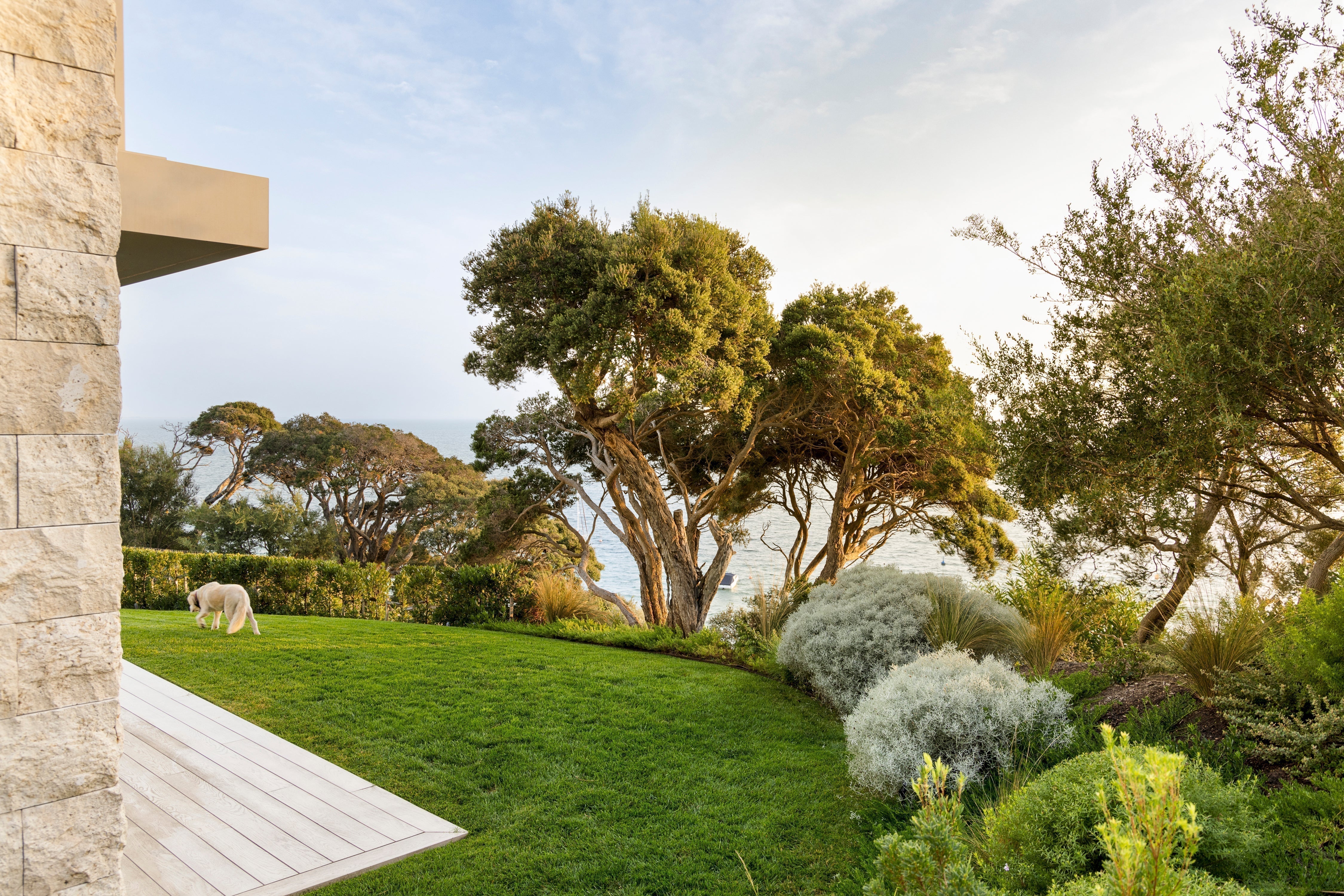
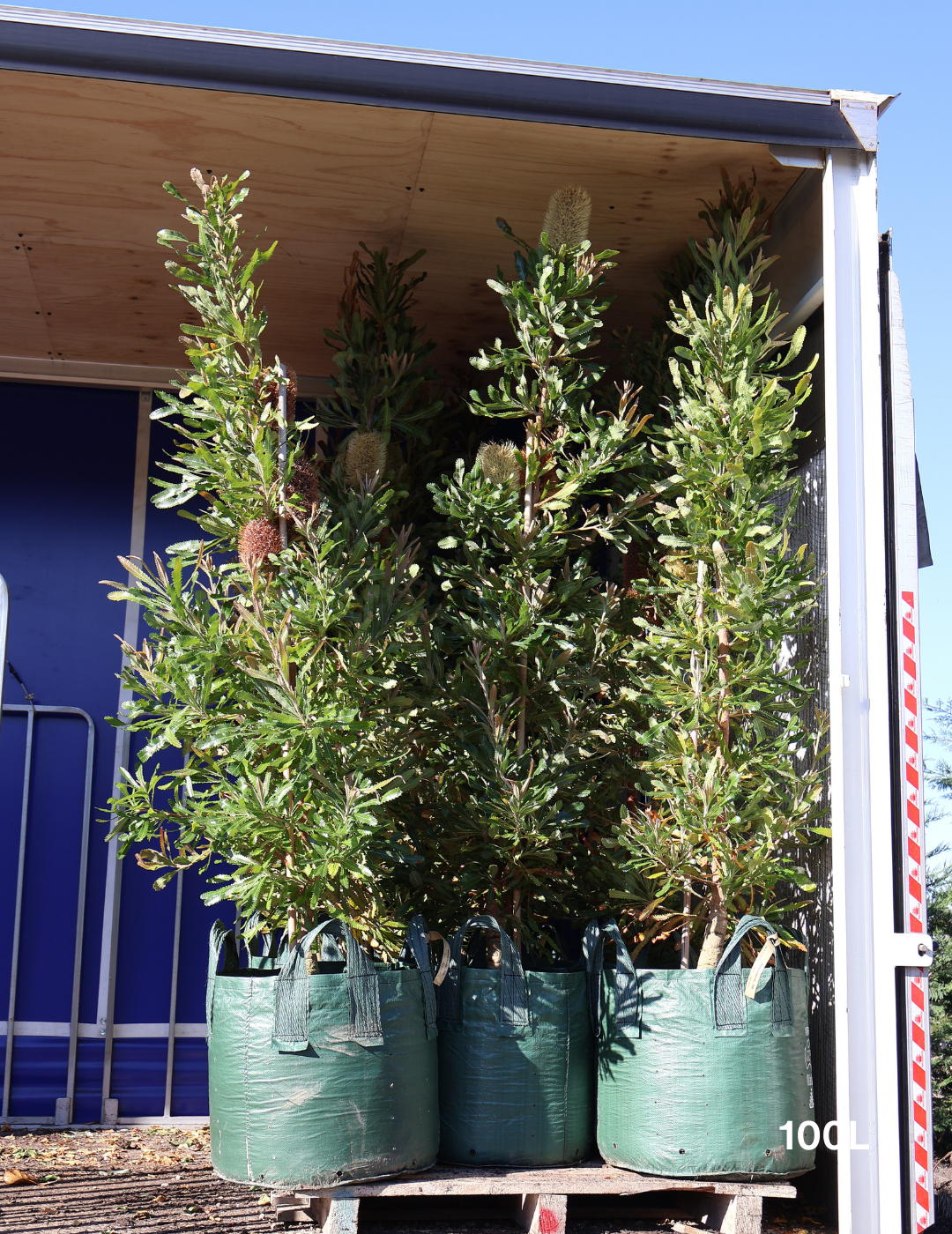
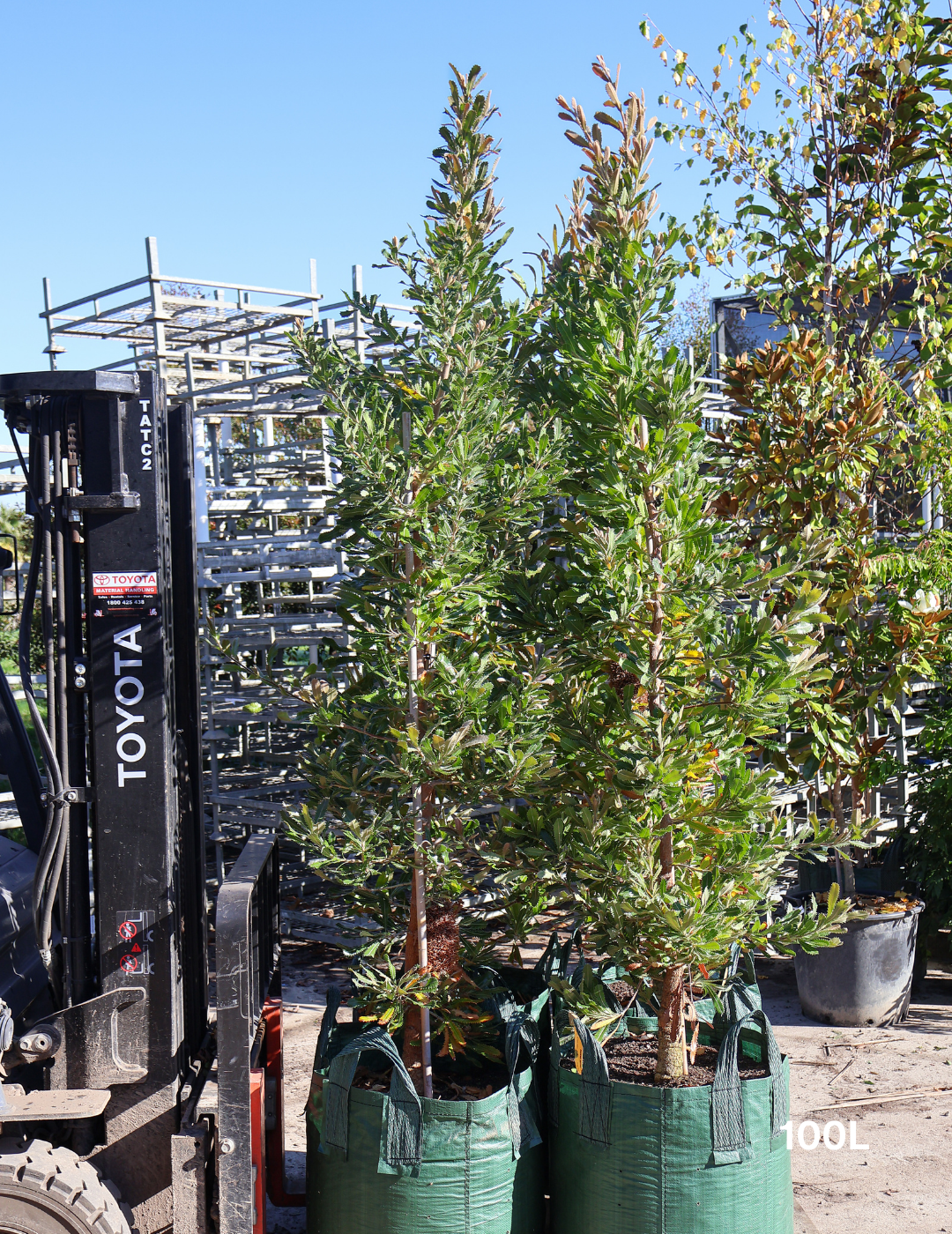
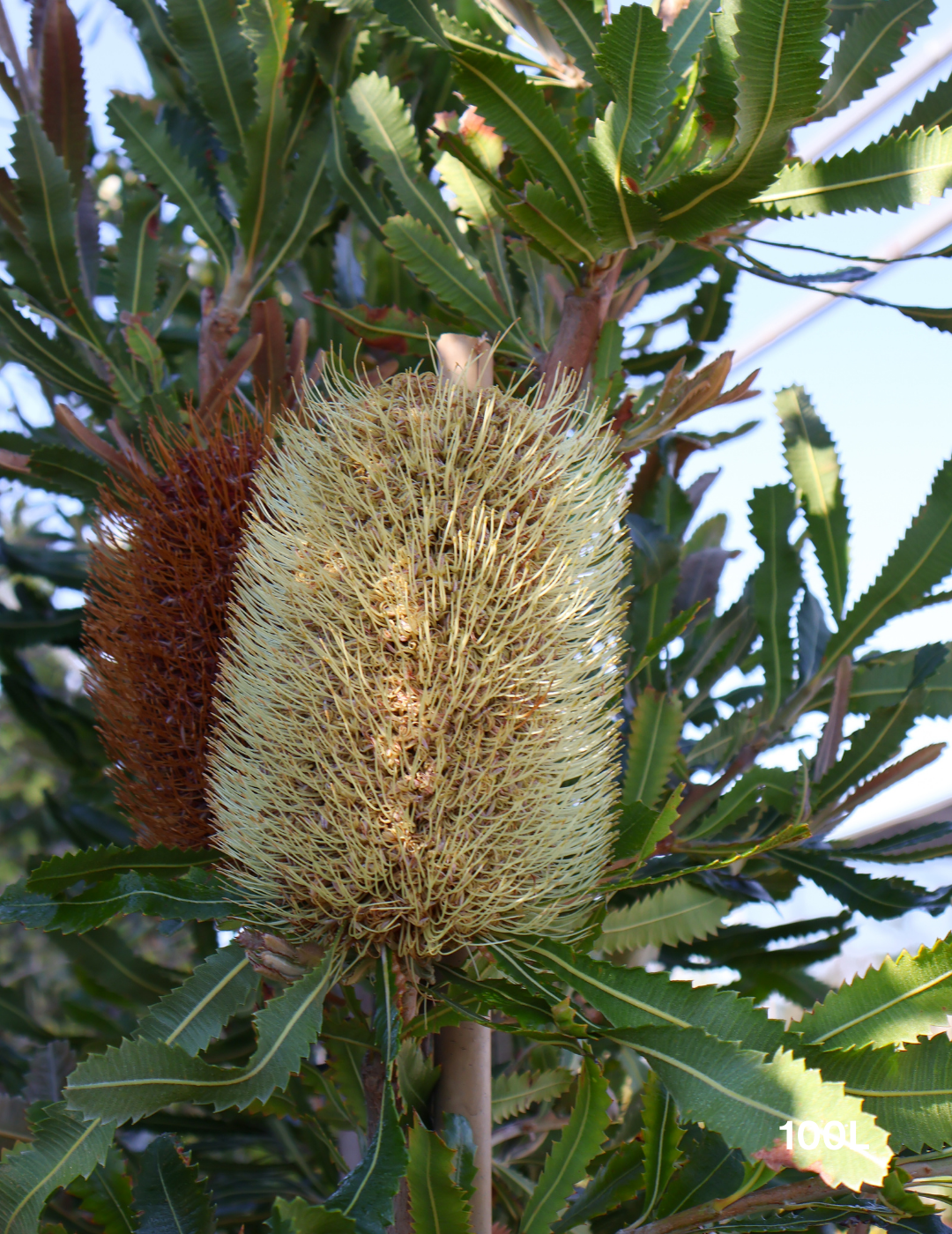
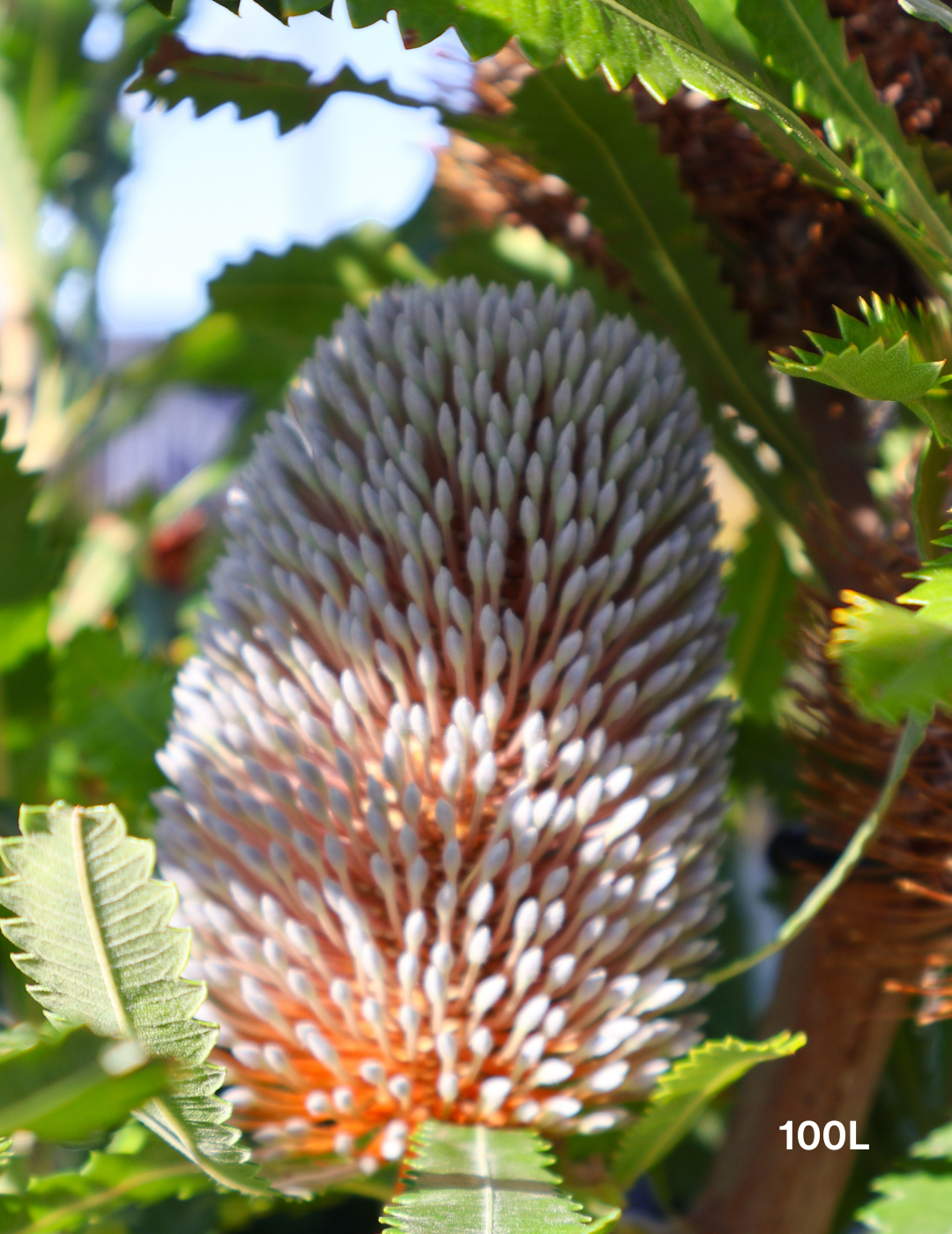
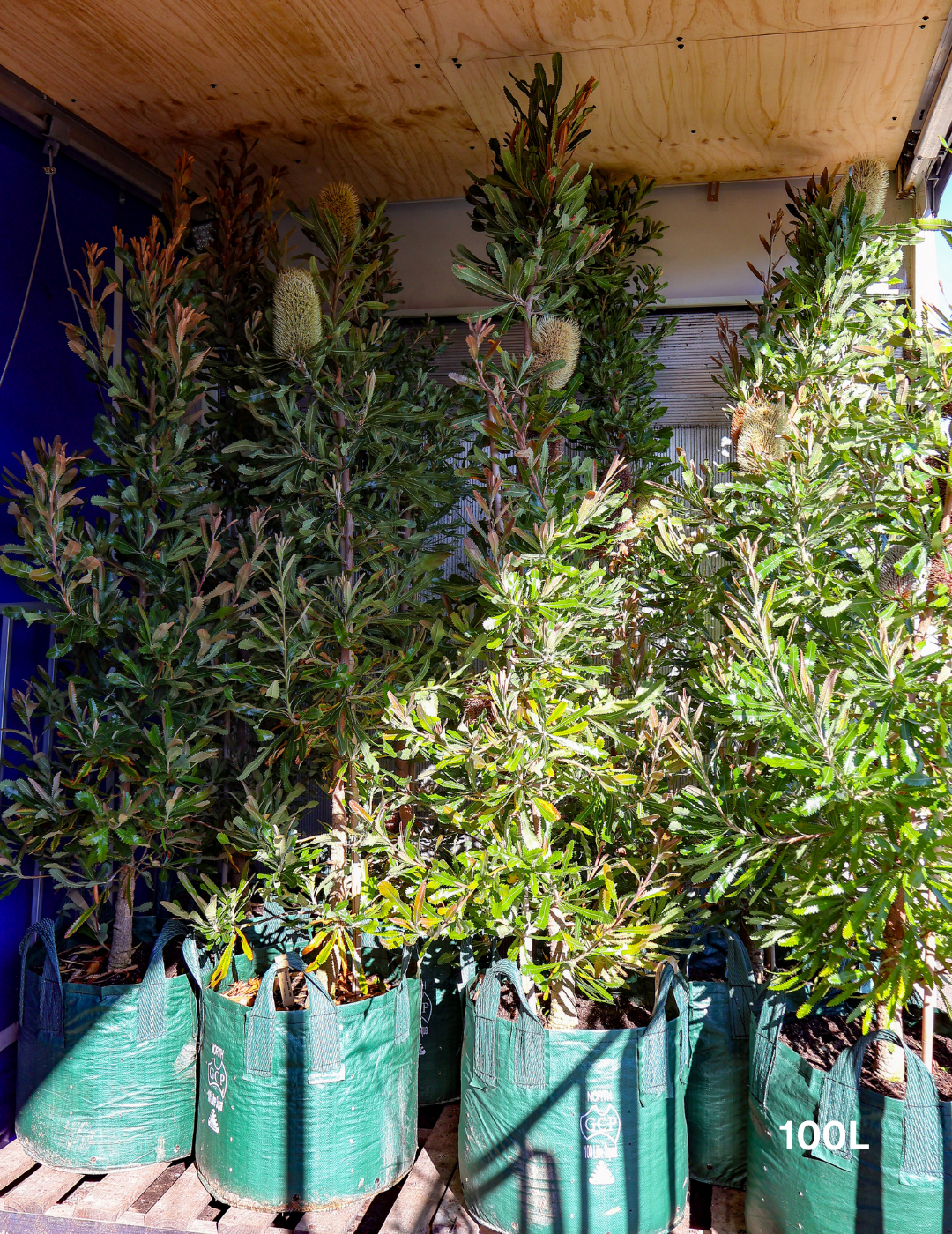
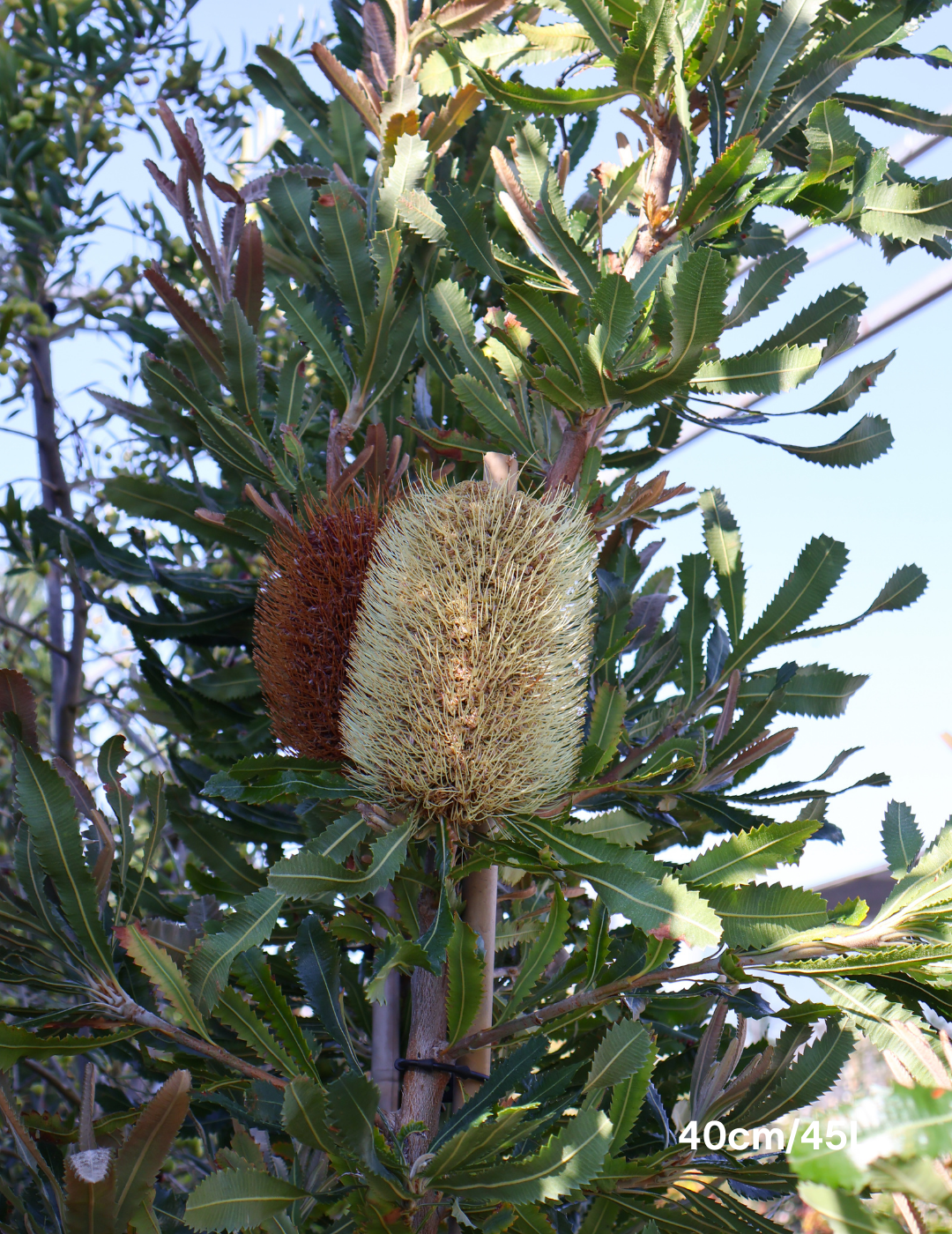
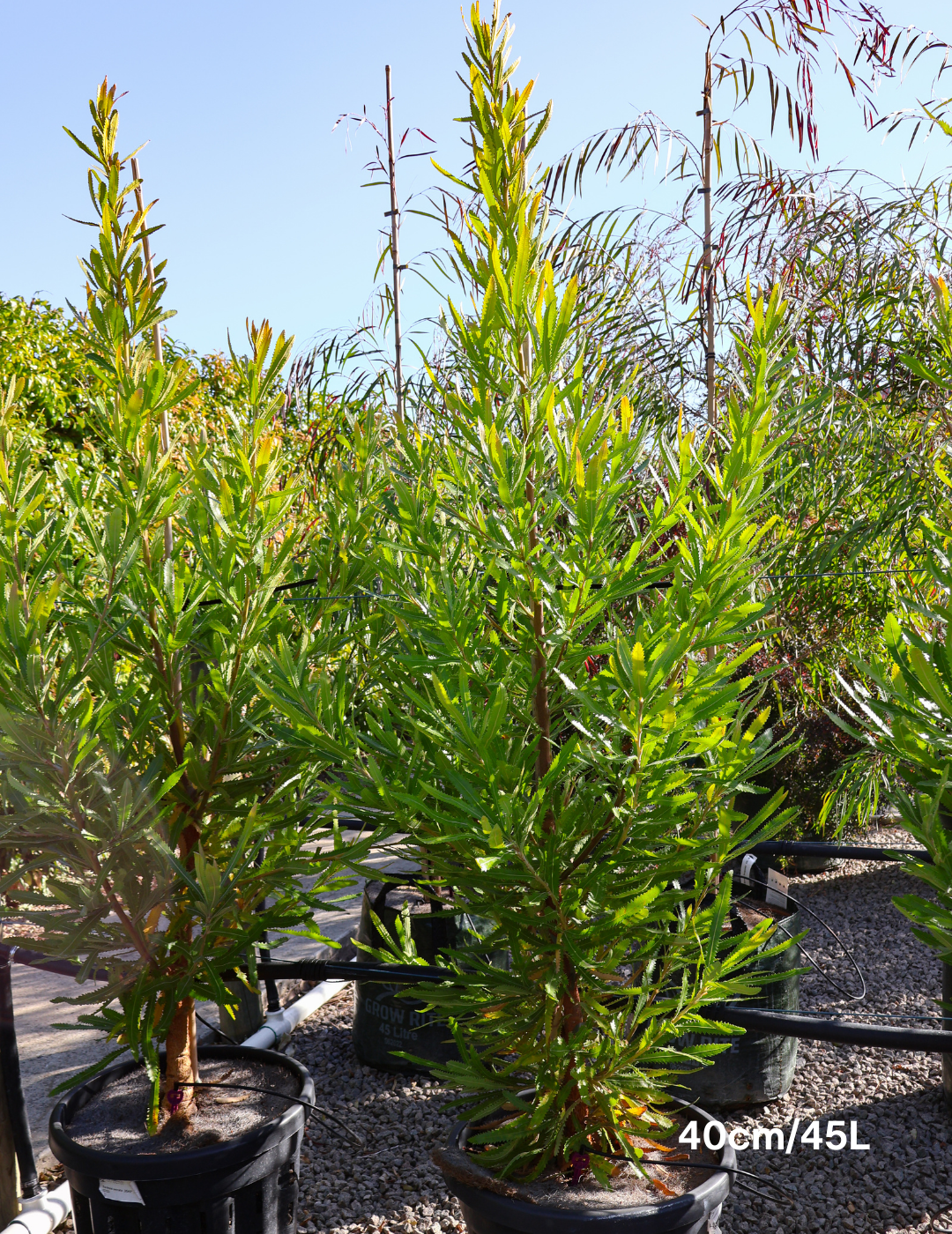
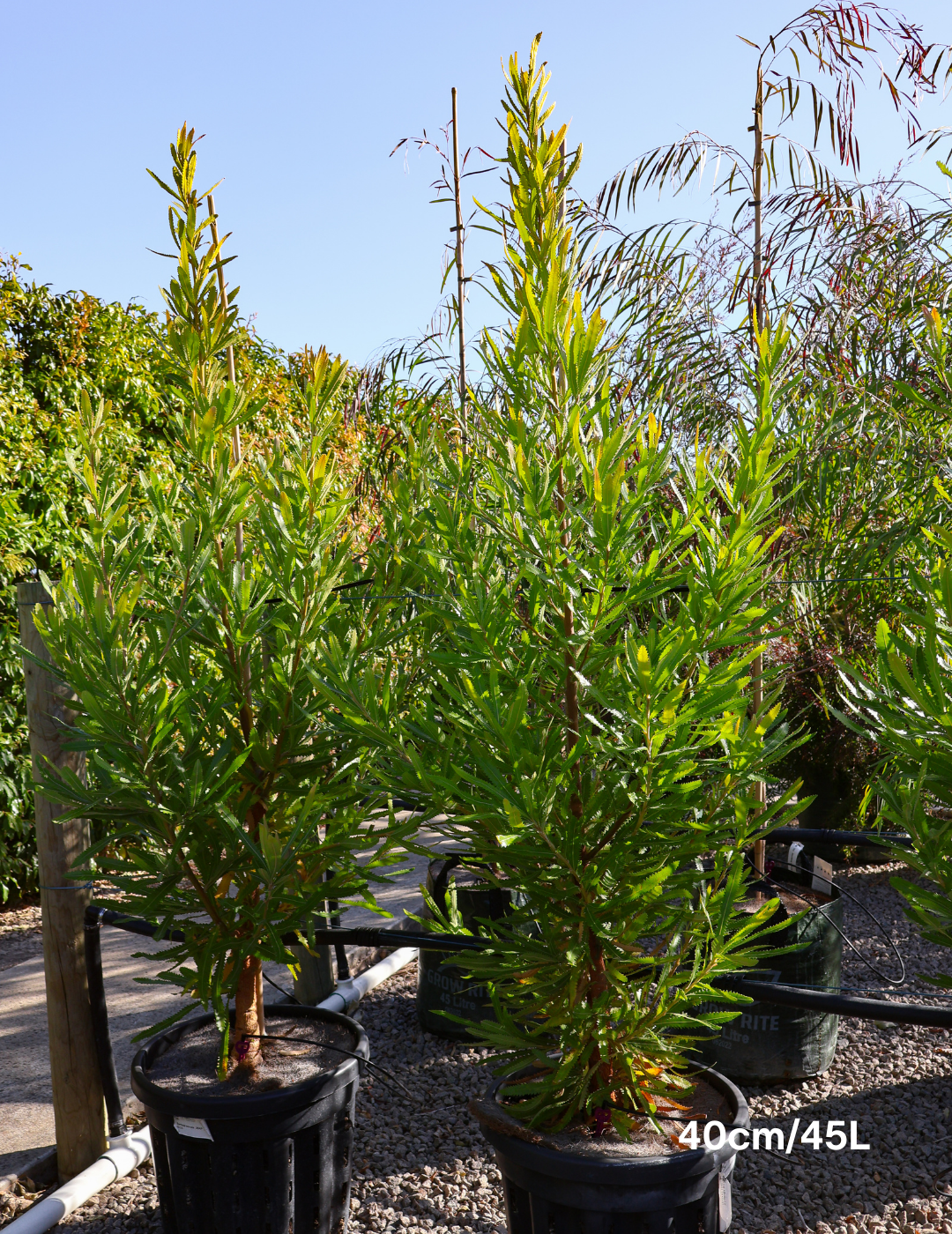
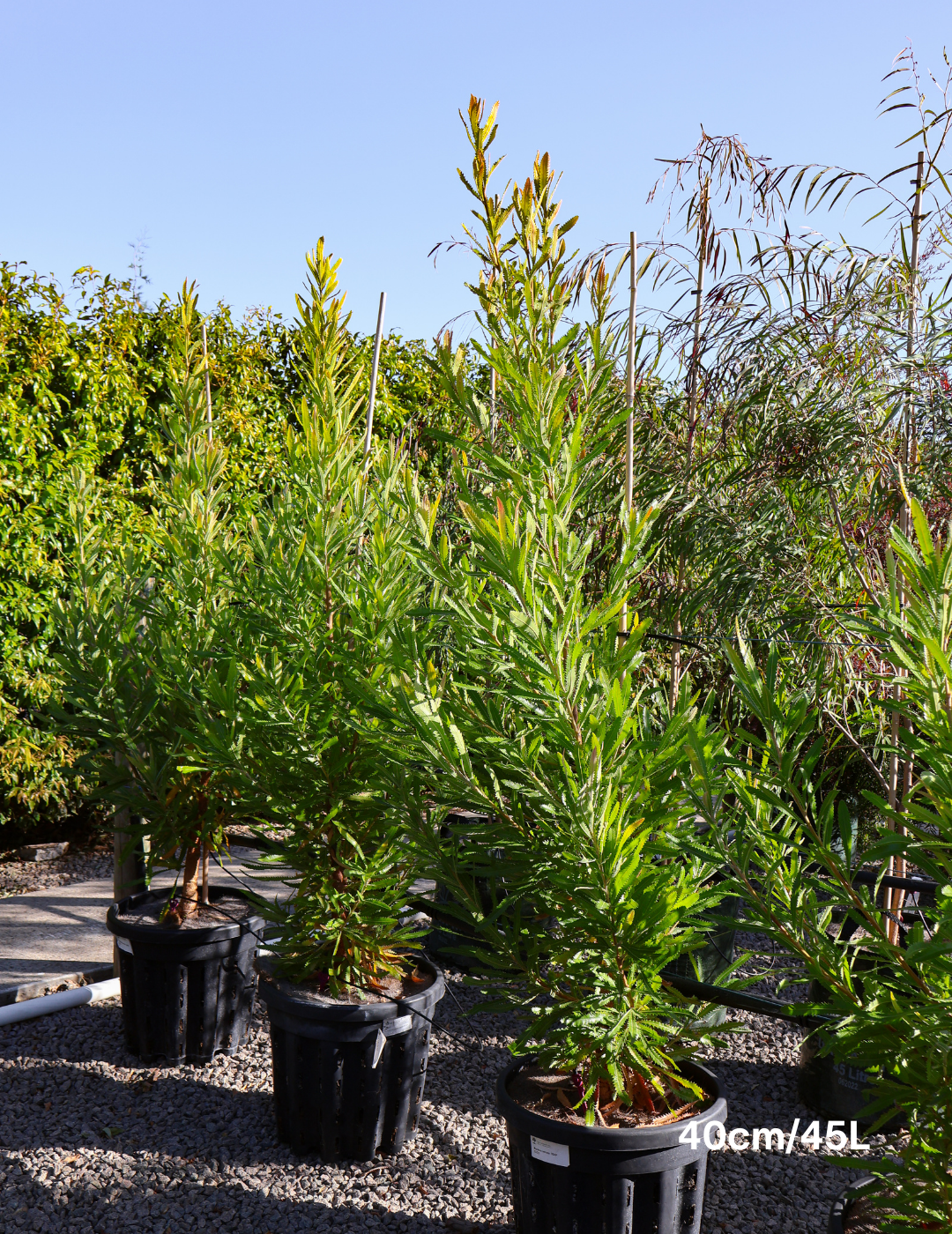
Banksia Serrata
- Regular price
- $555.00
- Sale price
- $555.00
- Regular price
-
Learn About Your New Banksia Serrata
Banksia serrata, often referred to as Old Man Banksia, is a robust Australian native plant distinguished by its gnarled trunk and leathery, serrated leaves. This species is celebrated not only for its striking appearance but also for its resilience in harsh environments and its importance in native ecosystems.
Common Name: Old Man Banksia
Mature Height: Typically grows to about 6-15 meters, though often smaller in gardens.
Mature Width: Can spread 2-4 meters, with a broad and irregular canopy.
Spacing: Plant at least 3-4 meters apart to accommodate its spreading habit and ensure adequate air circulation.
Foliage: Features stiff, dark green leaves with serrated edges, which can be up to 20 cm long, providing a distinctive texture to the landscape.
Flowering Period: Boasts large, cylindrical flower spikes that range from a greyish-yellow to golden color, appearing from late summer to winter. The flowers are rich in nectar and attract a variety of birds and insects.
Form/Habit: Exhibits a gnarled and twisted trunk with a spreading, irregular form, often with a single stout trunk and rugged bark.
Uses: Ideal for native gardens, coastal landscapes, and as a feature plant due to its dramatic form and foliage.
Evergreen/Deciduous: Evergreen, providing constant visual interest throughout the year.
Tolerates: Exceptionally hardy, tolerating poor soils, drought, and salt spray, making it suitable for coastal and low-maintenance gardens.
Drought Hardy: Yes, highly drought-resistant once established.
Sun: Prefers full sun but can tolerate partial shade, which may reduce flowering and alter plant form.
Maintenance: Low; occasional pruning may be necessary to maintain desired shape and remove any dead wood.
Additional Information
- Soil Preferences: Adapts well to a variety of soil types but thrives in well-drained, sandy soils. Avoid waterlogged conditions.
- Watering Needs: While established plants are drought-tolerant, regular watering during extended dry periods will encourage healthier growth and flowering.
- Wildlife Attraction: The flowers are a significant source of food for nectar-feeding birds and insects, particularly during winter when food is scarce.
- Propagation: Typically propagated from seed, which usually germinates readily without pre-treatment. It can also be grown from cuttings of firm new growth.
- Pests/Diseases: Generally robust but watch for banksia borers and dieback disease (Phytophthora), which can be controlled with good garden hygiene and appropriate plant placement.
- Landscape Design Tips: Use Banksia serrata to create a strong focal point in gardens. It’s also effective when planted in groups to form a dense screen or windbreak. The unique form and foliage make it a standout in rockeries and native plantings where its ecological benefits can be fully appreciated.
Banksia serrata stands out not only for its unique botanical features and durability but also for its ecological importance, making it a valuable addition to any garden seeking to enhance local biodiversity and provide year-round interest.
Need Assistance For Your Next Project? Let Us Help.
Evergreen Trees Direct is Australia's unrivaled supplier of the highest quality advanced tree stock. Our extensive supplier network allows us to provide a one-stop shop for all your landscaping needs, no matter how big or small the project. We pride ourselves on exceptional service, ensuring a seamless experience from selection to delivery. Trust us to bring your landscaping vision to life with the perfect trees for any outdoor space. With our unrivaled selection and commitment to service, Evergreen Trees Direct is the top choice for landscapers, property developers, and garden enthusiasts alike.
-
 A layered, resilient coastal garden designed to withstand harsh salt winds and seasonal extremes. This Mornington Peninsula property features a cur...
A layered, resilient coastal garden designed to withstand harsh salt winds and seasonal extremes. This Mornington Peninsula property features a cur... -
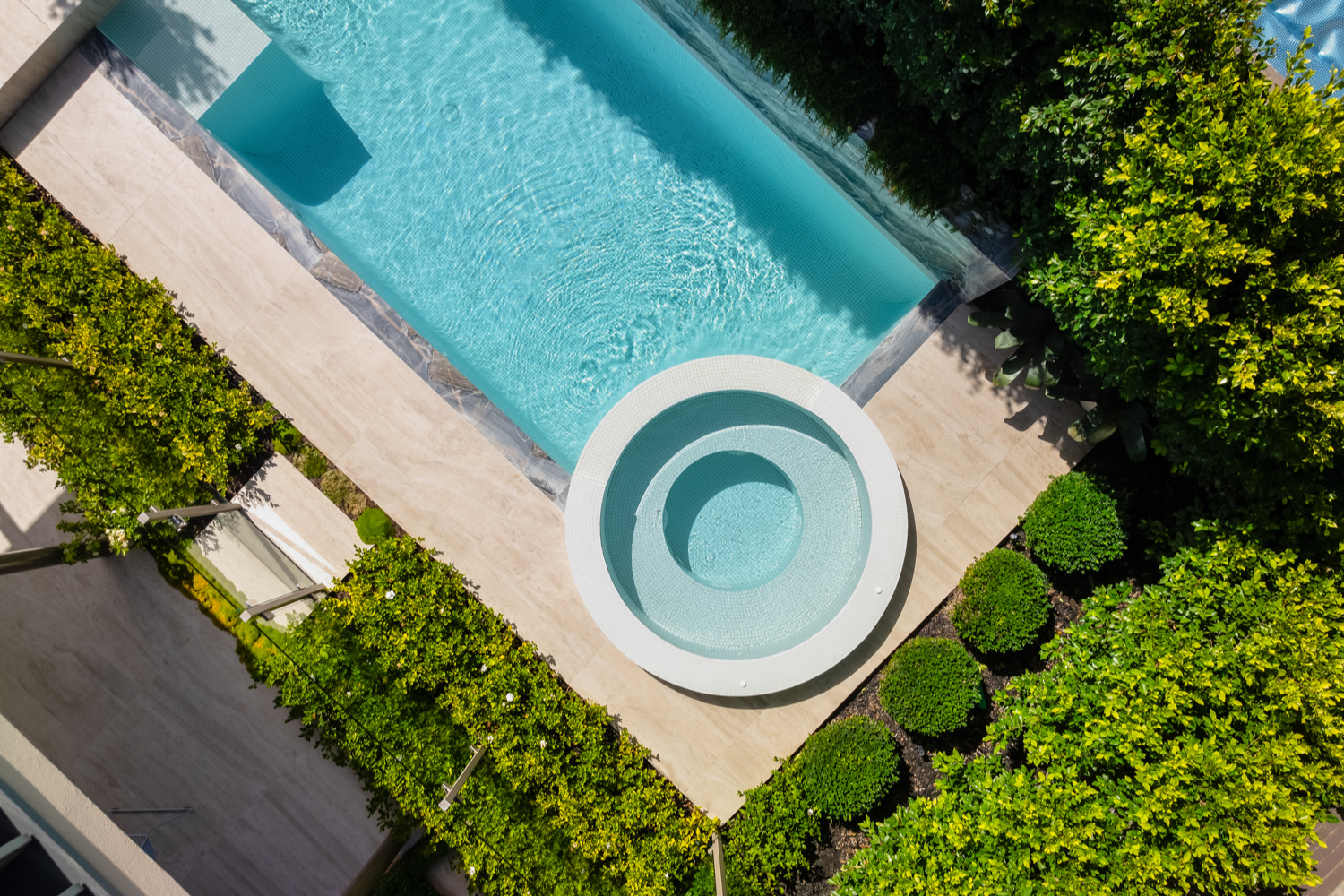
Brighton Project
Presenting our recent project in Brighton, Victoria, landscaped by Jack Merlo Landscape & Design. This modern landscape features a variety of h... -
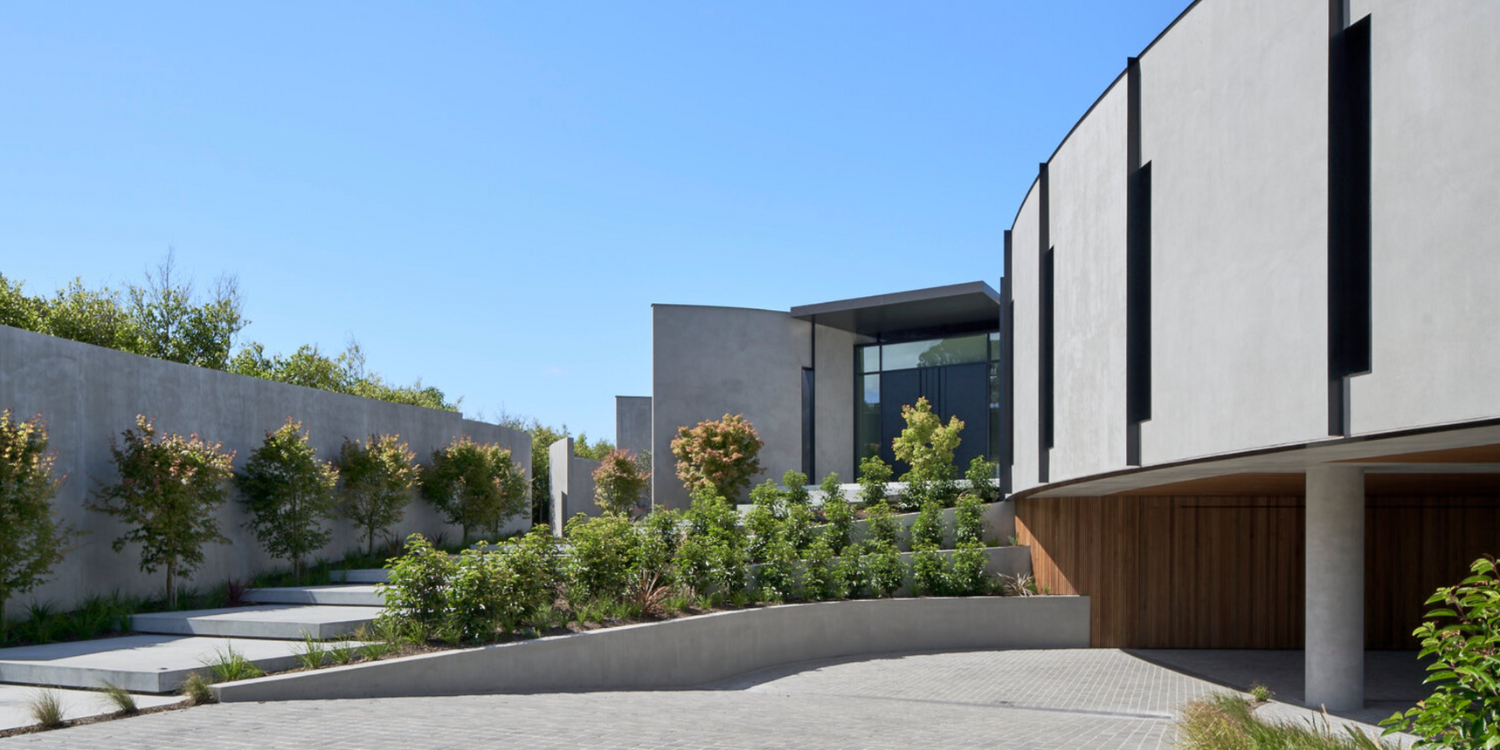
Horizon House, Flinders
Horizon House in Flinders blends nature with bold architectural design, using natural elements to enhance its modern aesthetic.Acer Palmatum (Japan...
